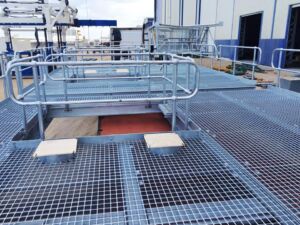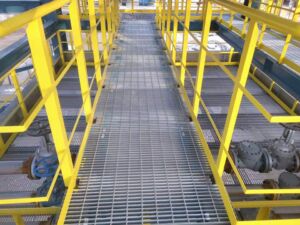Steel grating and stainless steel grating are both popular choices for industrial flooring and walkways. However, they have distinct differences in terms of material, durability, and applications. In this article, we will compare steel grating vs. stainless steel grating in detail to help you make an informed decision for your specific needs.
Steel grating is typically made of carbon steel, which is known for its strength and durability. It is an ideal choice for heavy-duty applications such as industrial flooring, catwalks, and stair treads. Stainless steel grating, on the other hand, is made of corrosion-resistant stainless steel, making it suitable for environments where corrosion is a concern, such as chemical plants, food processing facilities, and marine environments.

One of the key differences between steel grating and stainless steel grating is their resistance to corrosion. While steel grating is prone to rust and corrosion when exposed to moisture and chemicals, stainless steel grating offers excellent corrosion resistance, making it a preferred choice for harsh environments. Another important factor to consider is the load-bearing capacity. Steel grating is known for its high strength and load-bearing capacity, making it suitable for heavy traffic and industrial applications. Stainless steel grating also offers impressive strength and durability, but it may have a slightly lower load-bearing capacity compared to steel grating.
When it comes to maintenance, stainless steel grating has a clear advantage over steel grating. Stainless steel requires minimal maintenance and is easy to clean, making it a cost-effective choice in the long run. Proveedor China Ventajas, on the other hand, may require regular maintenance to prevent rust and corrosion, especially in high-moisture or corrosive environments. In terms of aesthetics, stainless steel grating has a modern and sleek appearance, making it a popular choice for architectural and decorative applications. Proveedor China Ventajas, while durable and functional, may not offer the same visual appeal as stainless steel grating.

In summary, both steel grating and stainless steel grating have their own unique advantages and applications. Steel grating is a robust and cost-effective option for heavy-duty industrial environments, while stainless steel grating is a premium choice for corrosive and aesthetically demanding settings. By understanding the differences between the two, you can select the right type of grating that best suits your specific needs and requirements.

